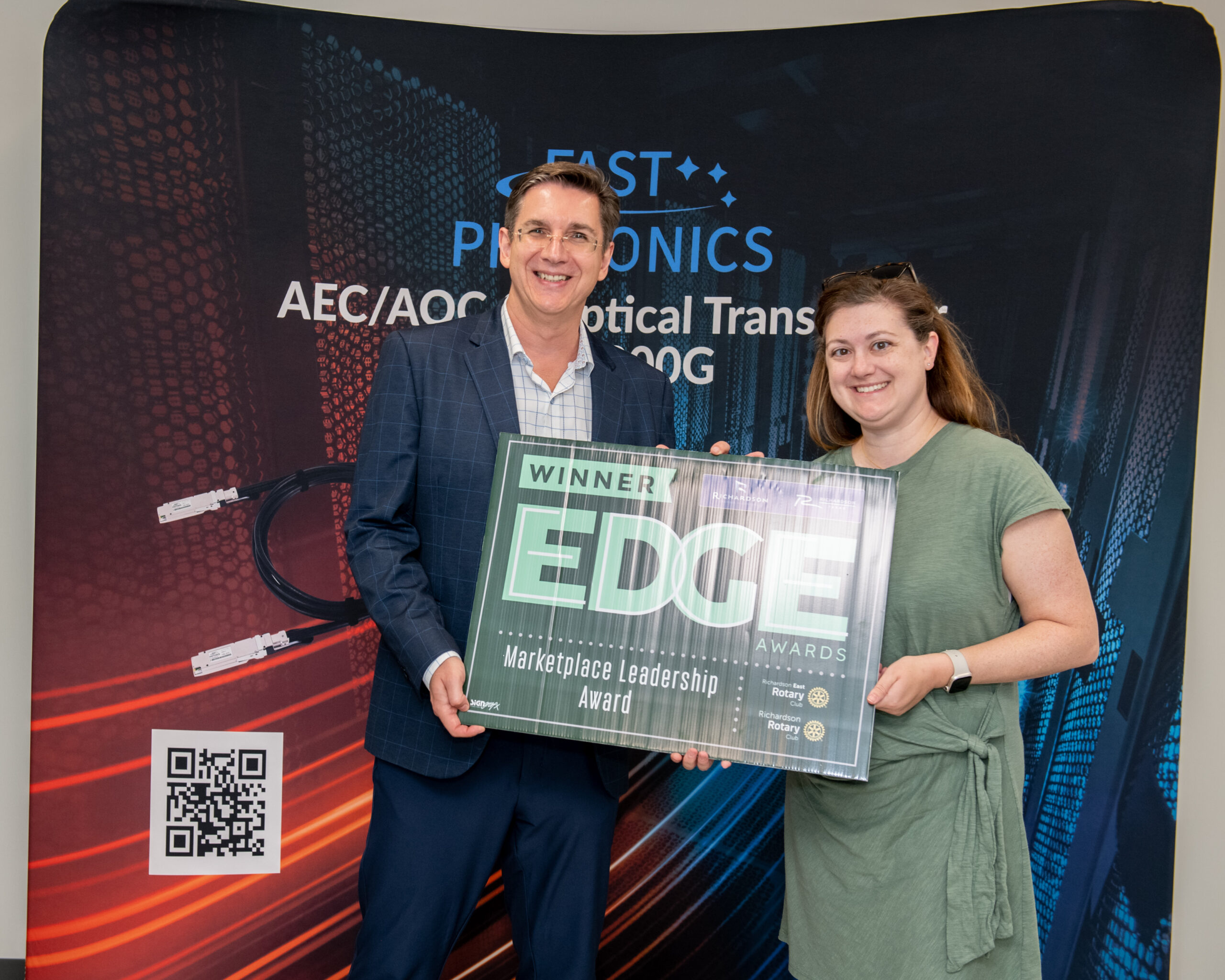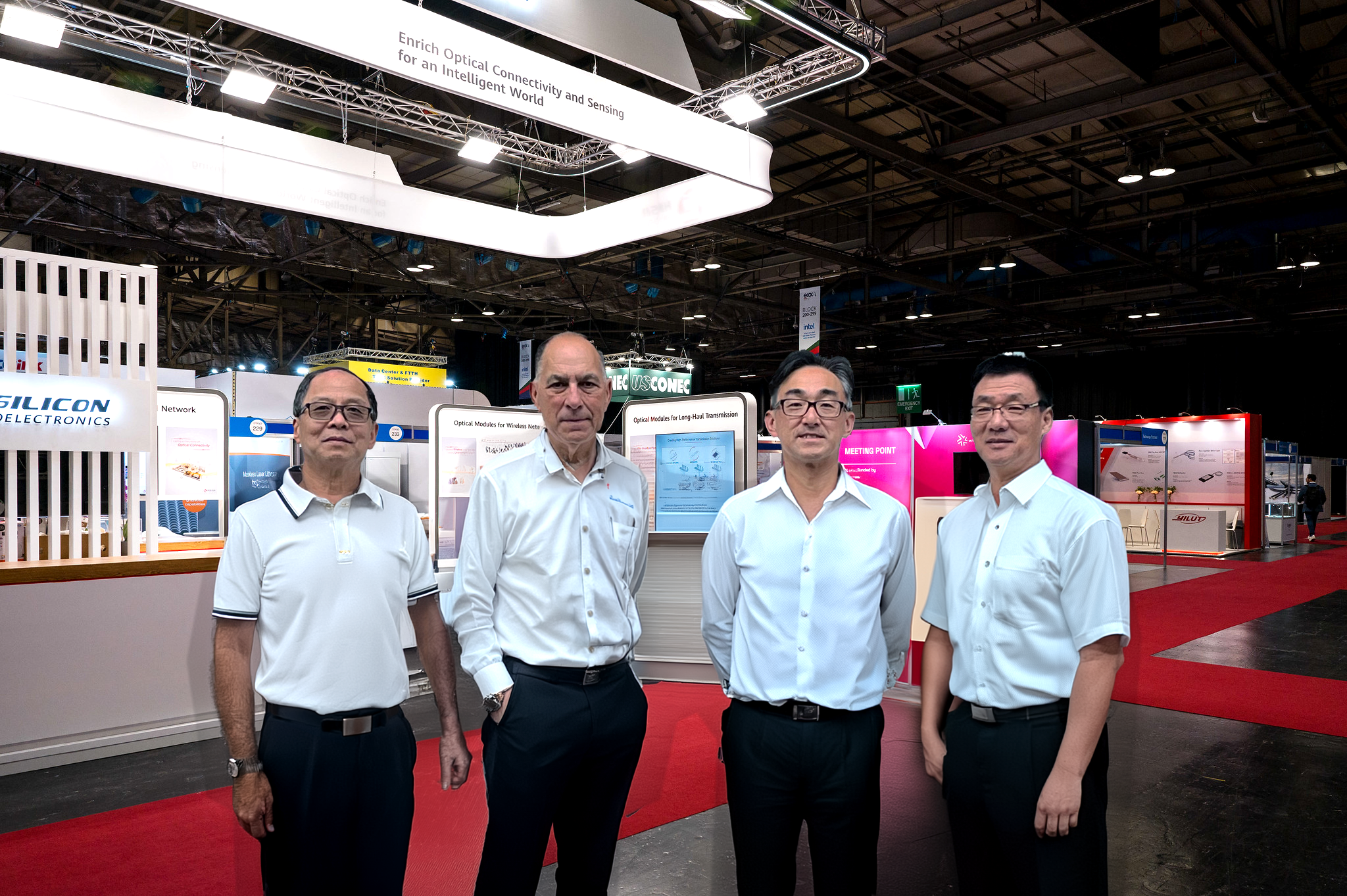As data centers proliferate – and the demand for greater speed and bandwidth grows in tandem – optical transceivers will play an increasingly important role in solving critical infrastructural bottlenecks.
In this article, we’re examining the benefits of optical transceiver technology in light of key trends and challenges shaping the data center industry.
Optical Transceivers: Key Innovations & Advantages for Data Center Infrastructure
Optical transceivers are devices that convert electrical signals into optical signals and vice versa. They are used in optical communication networks to transmit data over long distances with minimal signal loss and interference.
They offer significant advantages in terms of performance and scalability:
High Bandwidth
Optical transceivers support high data rates, often in the range of 10 Gbps to 1.6 Tbps and beyond. This high bandwidth capability is essential for handling the large volumes of data generated by data centers and AI applications.
Low Latency
In comparison to copper-based networks, optical communication offers significantly lower latency. This is critical for real-time applications and as-a-service models that require fast and responsive data transfer.
Long-Distance Transmission
Optical fibers can carry signals over long distances without significant degradation. This property is vital for connecting distributed data centers and facilitating workload migrations across geographically dispersed locations.
Scalability
Evolving data center demands require the kind of scalability that optical transceivers and fiber optic networks offer. They can easily accommodate increasing data traffic by upgrading transceivers or adding more fibers, making them suitable for evolving data center demands.
Reliability
Optical transceivers offer high reliability and resilience against electromagnetic interference. This reliability ensures consistent and dependable data transfer, which is crucial for maintaining the performance and uptime of data center operations.
Trends Defining the Future of Data Centers
Now let’s consider some of the most important trends shaping the outlook of the data center industry, and the role that optical transceiver technology is playing in each one.
AI Will Continue to Drive Deals With Data Centers
As data center infrastructure increasingly adopts cloud-native technologies, there is a significant shift towards platforms that are designed to operate efficiently in cloud environments. This transition demands high-speed data transmission to support the operations managed by cloud-based control planes. Cloud-native infrastructure involves scalable, flexible, and distributed systems that require seamless data flow between various components and locations.
Optical transceivers are critical in this context as they provide the necessary bandwidth and speed for efficient data transfer. This capability ensures that cloud-native applications can communicate swiftly and reliably with physical data centers, supporting the high-speed data exchange required for cloud-based operations.
Shrinking While Expanding: Workload Migration and Colocation Facilities
The trend of migrating workloads from owned facilities to co-location facilities or edge computing environments is gaining momentum. Organizations are moving their data and applications closer to end-users or leveraging third-party data center facilities to improve performance and reduce latency. This migration requires robust, high-speed connectivity to ensure that data can be transmitted efficiently and securely over long distances.
Optical transceivers enable this connectivity by facilitating high-speed data transmission over optical fiber networks. They ensure that data can be transferred quickly and reliably between different locations, which is crucial for seamless workload migration. The ability to handle large volumes of data with low latency and high reliability makes optical transceivers essential for organizations looking to migrate their workloads without compromising performance or security.
Data Center Infrastructure: the As-a-Service Model
The adoption of as-a-service models for physical infrastructure is transforming how data centers operate. This approach often involves distributed data centers and edge computing solutions, where services are provided on-demand and resources are managed dynamically. These models require efficient communication between distributed systems to deliver high performance and responsiveness.
Optical transceivers play a key role in connecting these distributed systems. They provide high-speed, low-latency communication across various locations, ensuring that data can flow seamlessly between different parts of the infrastructure. This connectivity is vital for maintaining the performance and reliability of as-a-service models, allowing data centers to offer scalable and flexible services that can adapt to changing demands.
American-Made Optical Transceivers: 400G to 1.6T Transceivers
Realizing all the benefits of the generative AI revolution will depend on the evolution and optimization of data centers to handle increasing demands for speed, storage, and computational power. At Fast Photonics USA, we are committed to providing the infrastructure that’s needed to achieve these goals.
By supporting high bandwidth, low latency, and reliable long-distance transmission, our optical transceivers pave the way for a robust, scalable, and efficient data center environment. Contact us to learn more about our product catalog and the solutions we offer to future-oriented data centers.





